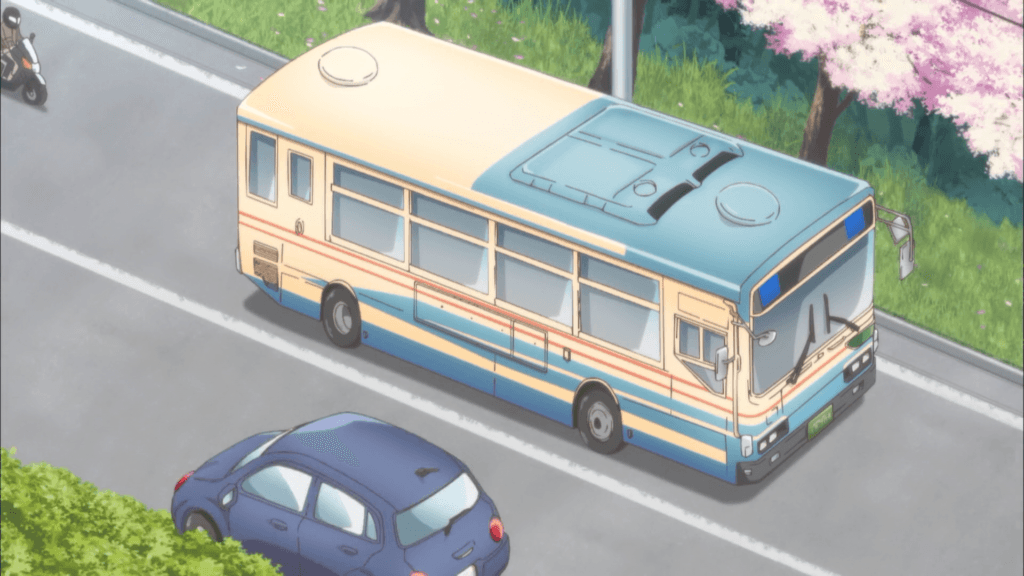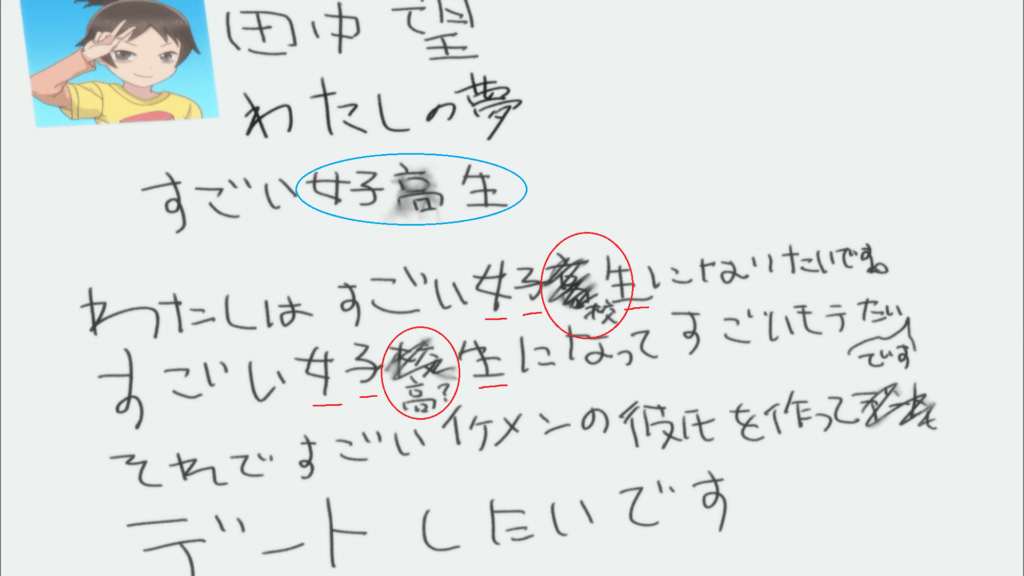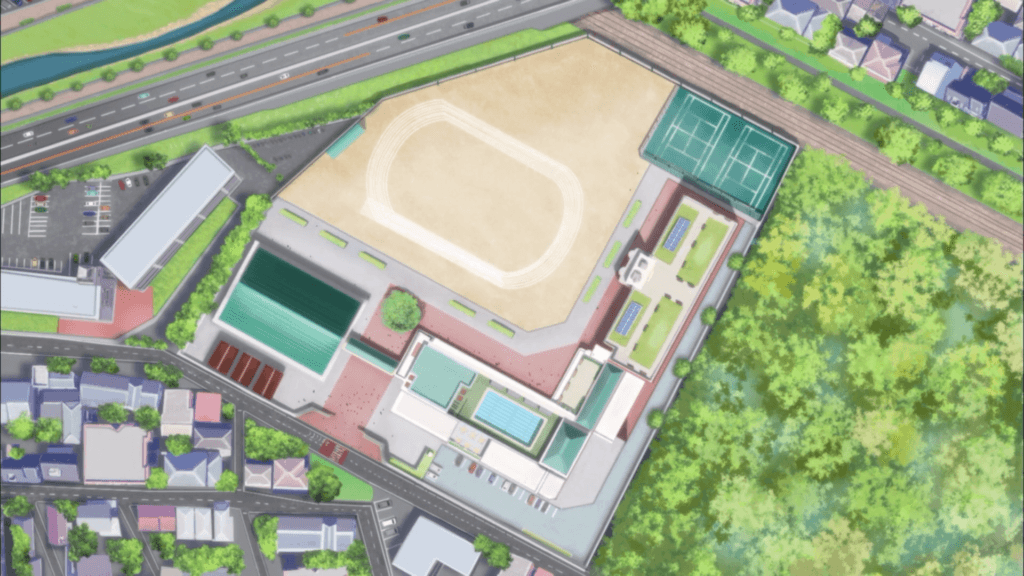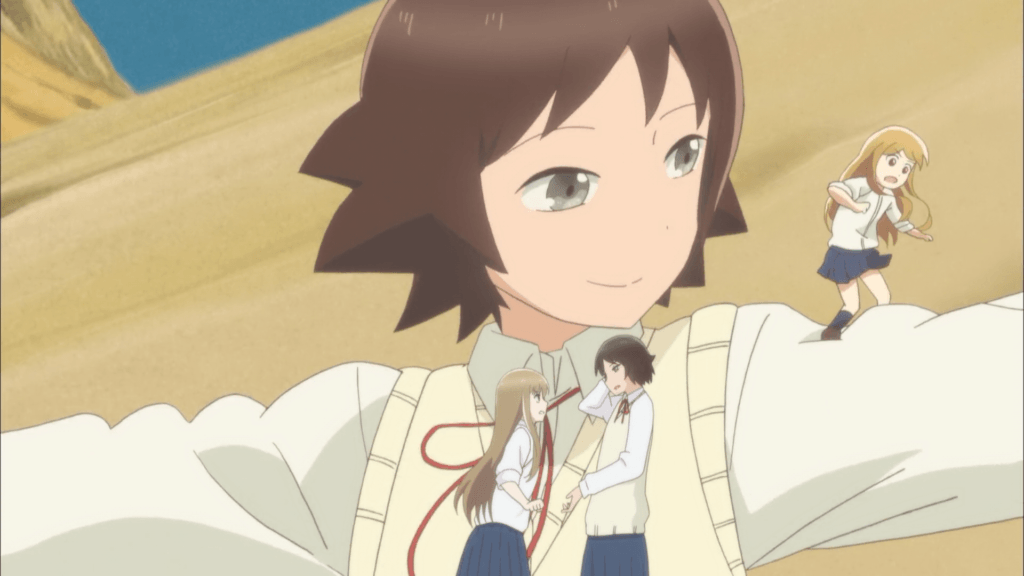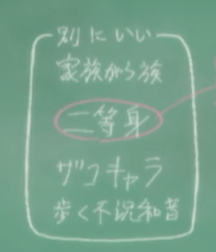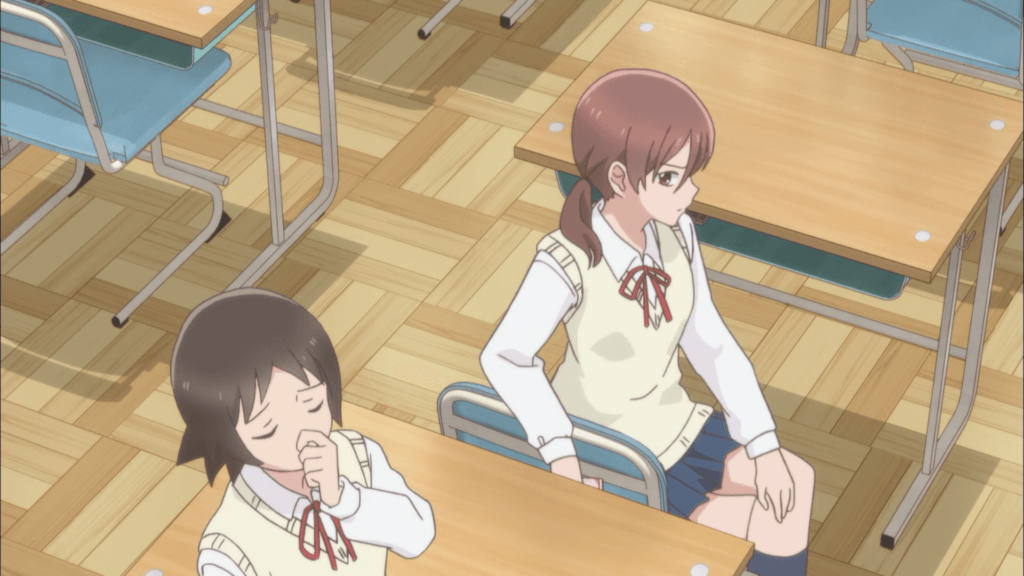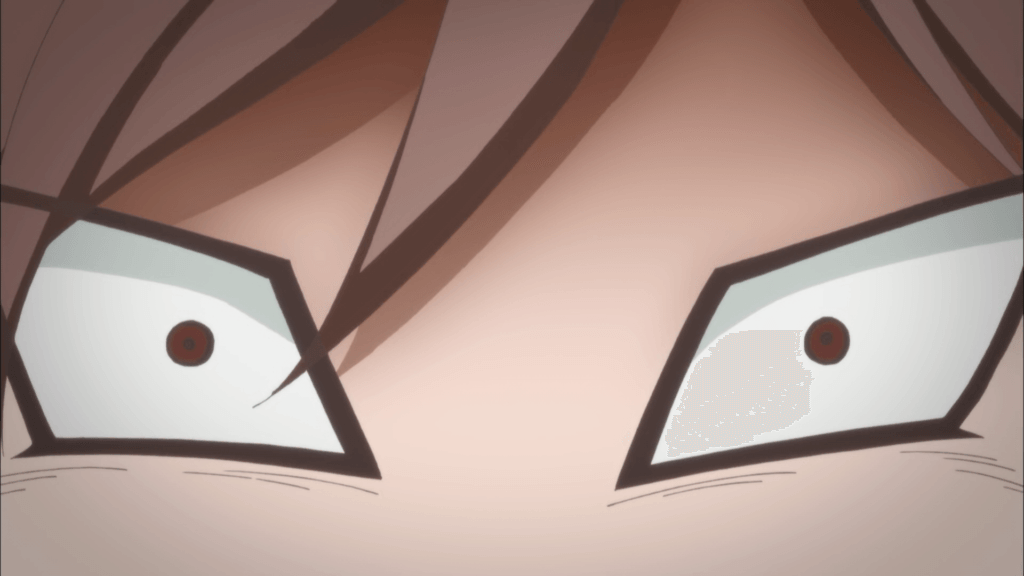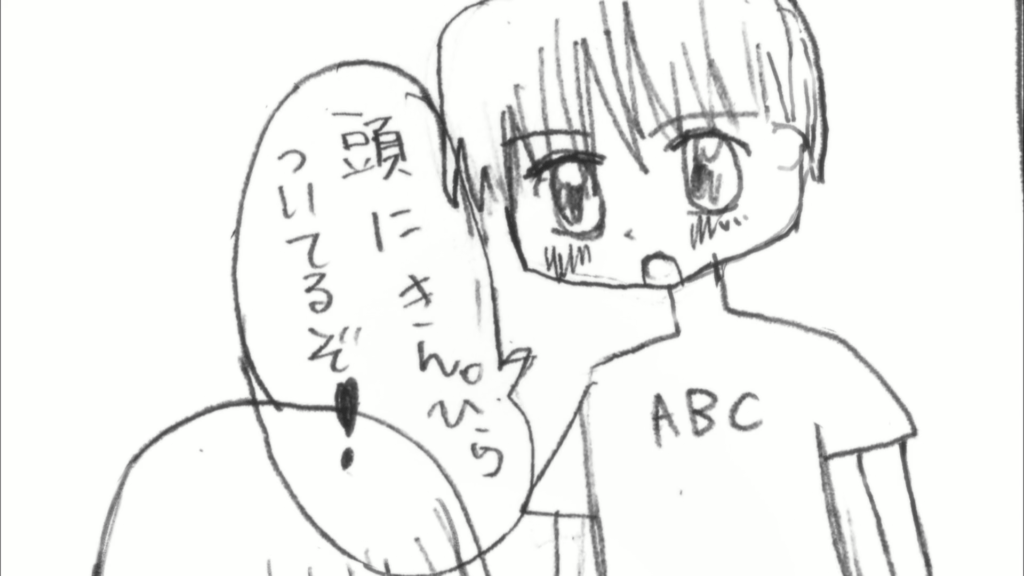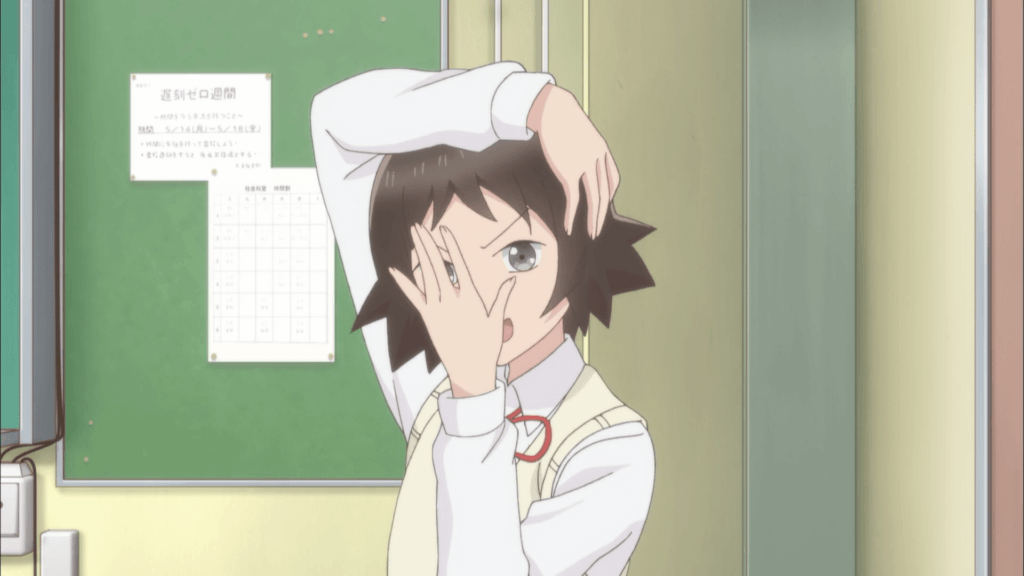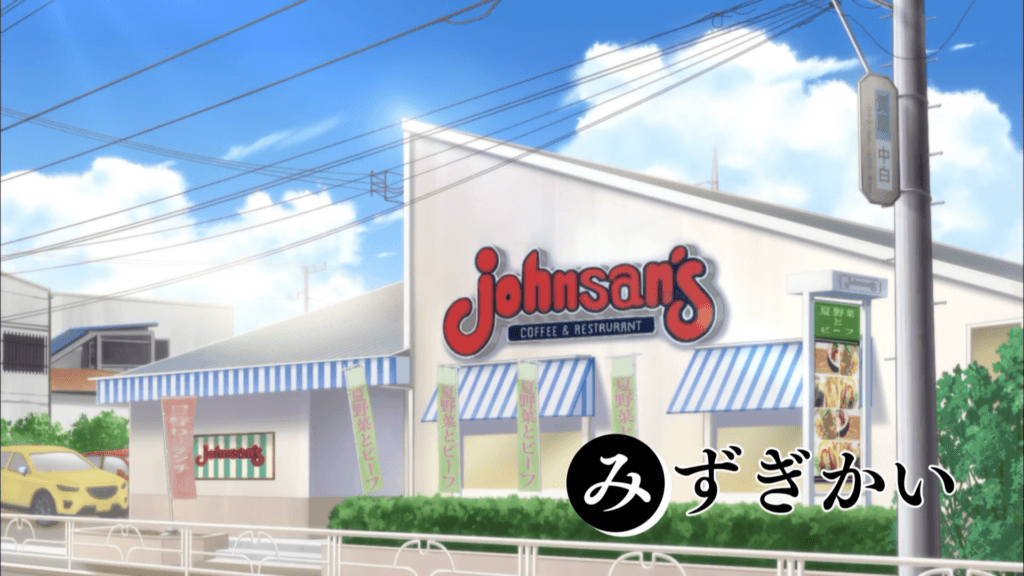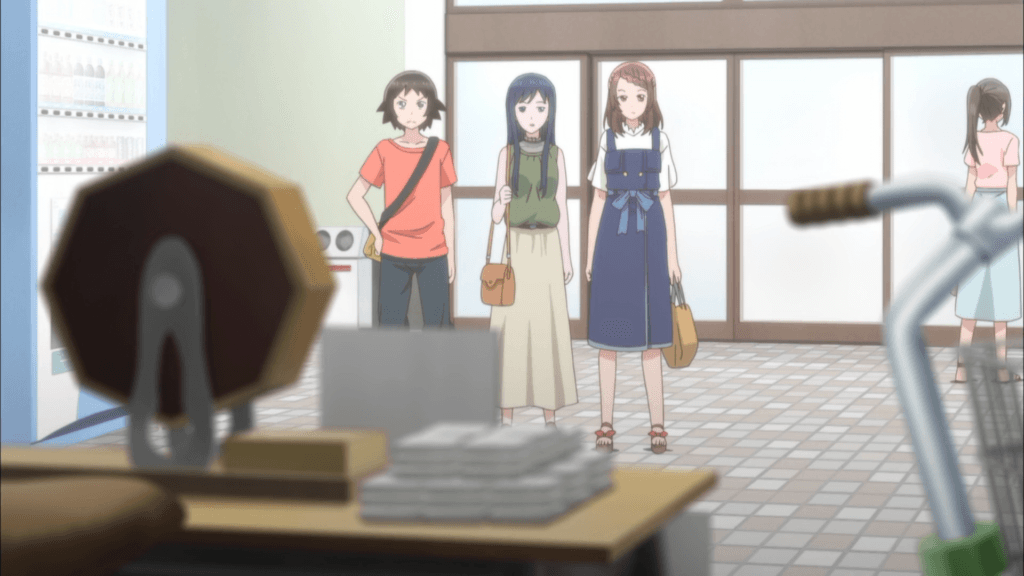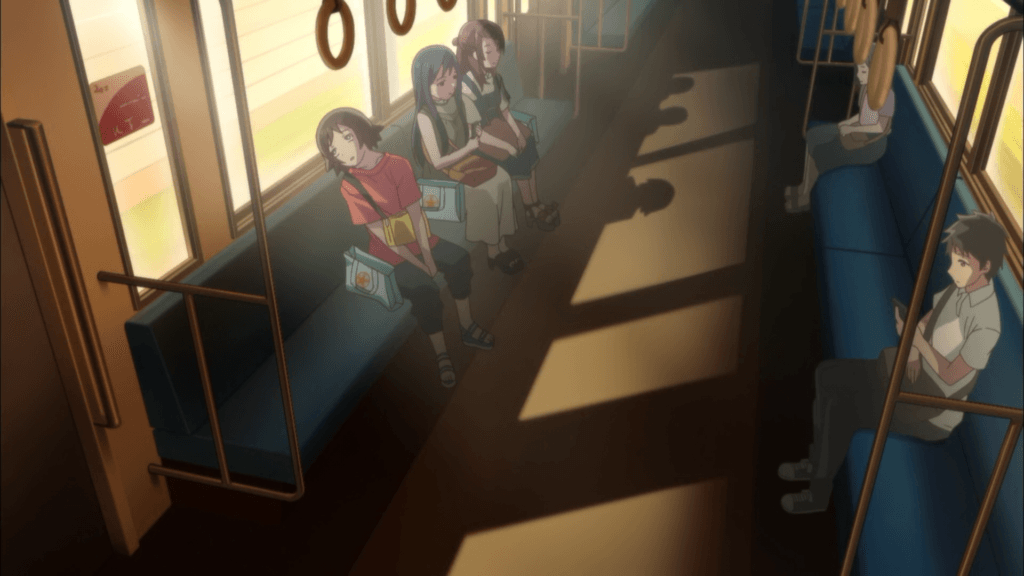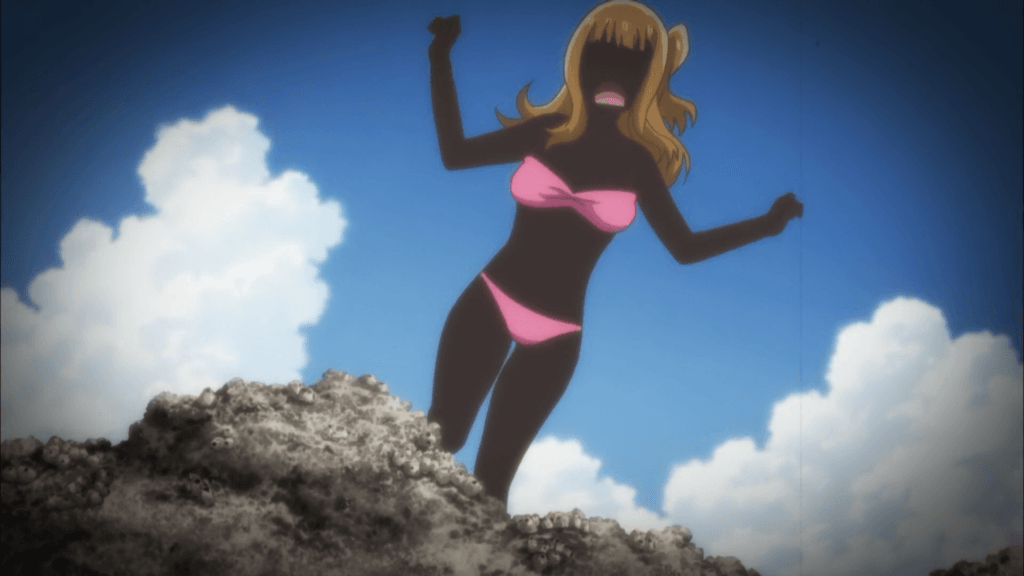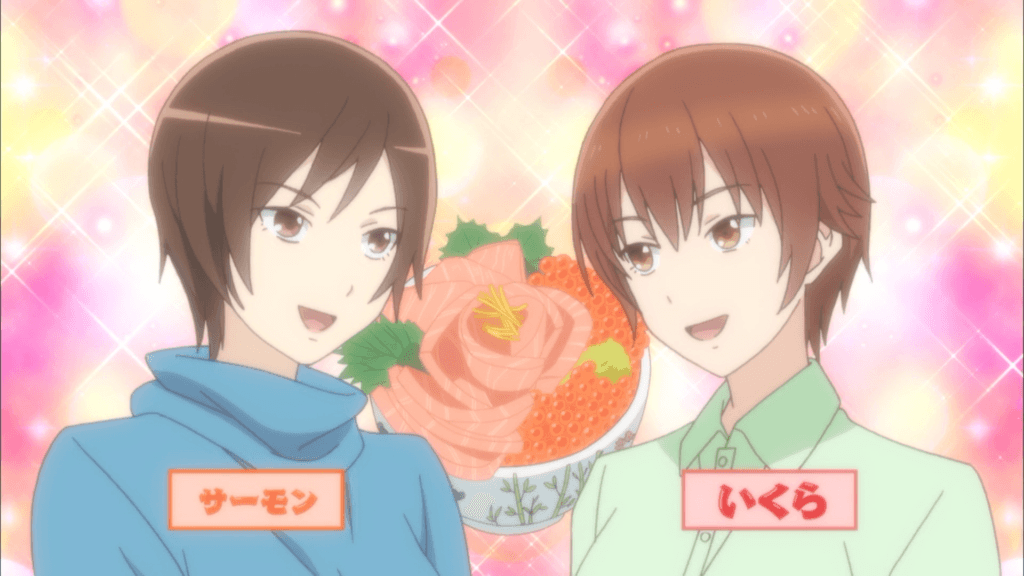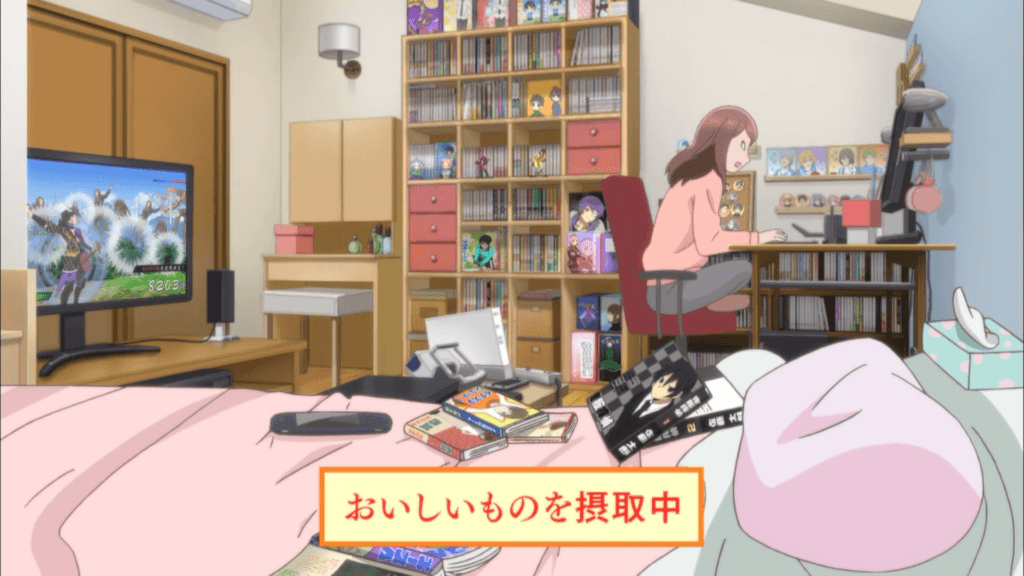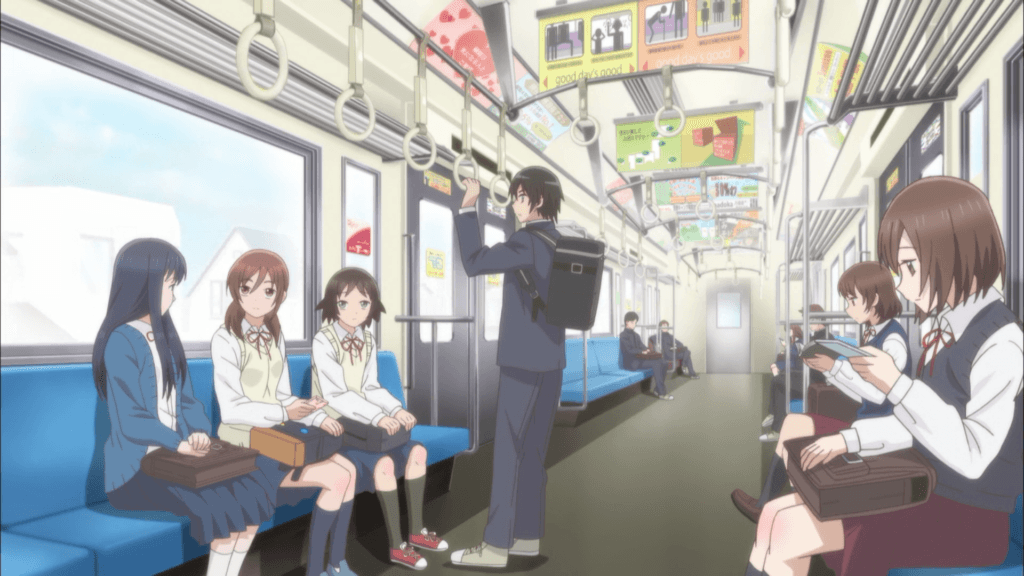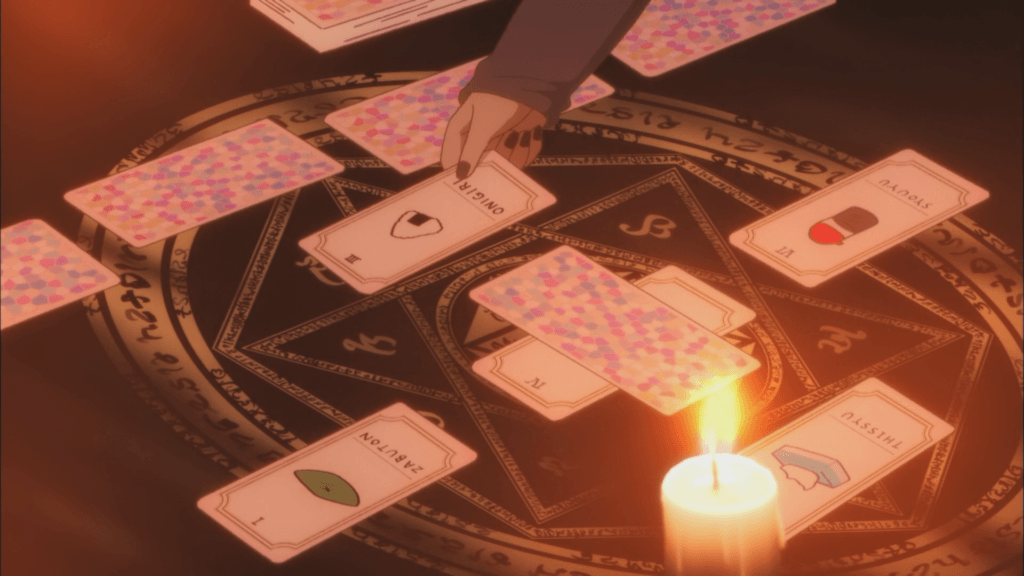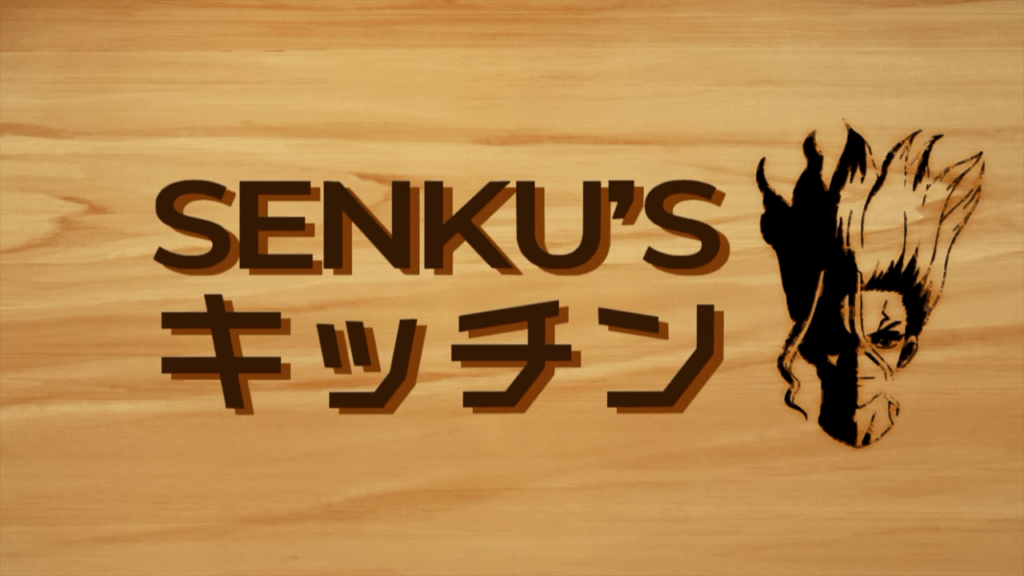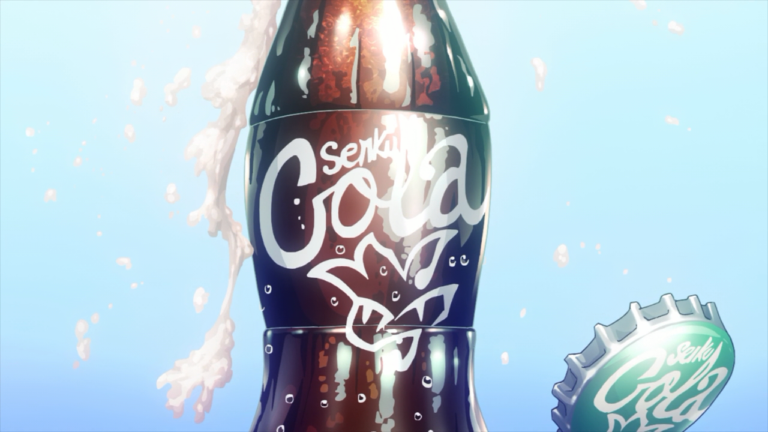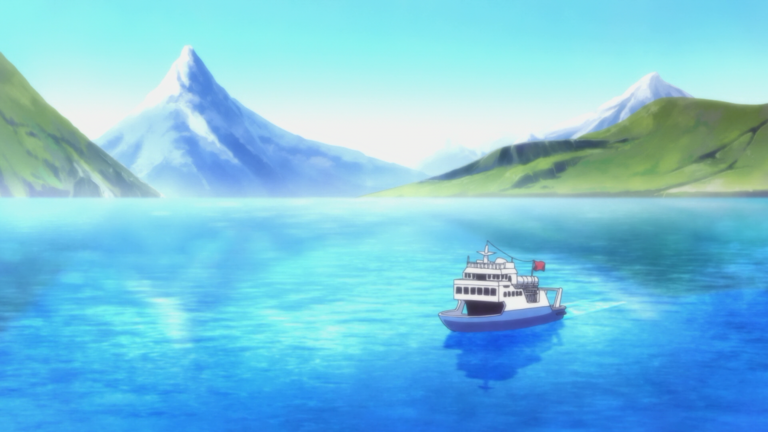Parodies, references and notes explanation for Joshikousei no Mudazukai / Wasteful Days of High School Girls episodes 1 to 9.
General
- The title “Joshikousei no Mudazukai (女子高生の無駄づかい)” literally means “wasteful use of girl high school student(s)”
Episode 1
The bus appearing early in the episode is most likely a Seibu bus
- To those who can read Japanese, the handwriting probably appears to be quite messy.
- The scribbled out characters circled in red are 高 and 校 respectively and were replaced with 校 and 高 respectively (as if swapped). Both are pronounced “kou” in this case. What Baka really wanted to write was “女子高生”, which means “girl high school student” but was unsure if she should use 高 or 校. To be safe, she could have just written both, as in “女子高校生” which means the same thing. However, she did get it right at the start (circled in blue).
The school and surrounding areas seem to based off of the real Tokyo Metropolitan Higashimurayama Nishi High School
The fantasy of Loli riding on Baka was a parody of a scene in Kaze no Tani no Naushika (known more commonly as Nausicaä of the Valley of the Wind in English) where a small critter moved around the main character’s body in a similar way in a similar sandy desert environment.
Baka uses an incorrect kanji character for the last term on the chalkboard, resulting in “歩く不況和音”. The intention was “歩く不協和音”, read as “fukyouwaon” which means “walking dissonance”. However, she used the character 況 instead of 協 which results in the same pronunciation/reading, but, when read with the rest of the other characters, means something like “walking depression chord”.
The first-person pronoun used by Baka in this scene was “wacchi” which was used by female prostitutes in Edo period red-light districts, but also a first-person pronoun still used by both genders of people commonly in the Mino dialect (source: wikipedia).
Episode 2
- The video streaming depicted in the scene is based on nico nico douga where users can write comments directly onto the video at the current time in the video and read them as they appear at those time.
- 低所得P, romanised as “TeishotokuP” and probably meaning “low-income producer” is a real creator and the music, lyrics and movie of the song depicted was also made by them.
- The video and song is probably “auLelia / 初音ミク“ (literally auLelia / Hatsune Miku) and uses the voice of Hatsune Miku
Pena-Sonic is a parody of Panasonic in terms of the name and for being a brand of electronic goods.
- B&L eyes probably stands for boys & love eyes, where boys love is a genre fiction involving love between male characters.
- The eyes resemble those of Frieza from the Dragonball series.
The “頭にきんぴらついてるぞ” (roughly, “there is kinpira on your head”) part in Wota‘s manga is a parody of “芋けんぴ、髪についてたよ” (roughly, “there is imo-kenpi on your hair”) from the manga Imokenpi wa Koi wo Yobu (literally, “Imokenpi calls (romantic) love”).
Episode 3
The line “野生のばあちゃんが現れた” (yasei no baa-chan ga arawareta), translated as “A wild granny has appeared!” is a reference to the Pokemon games when the player encounters a Pokemon in the wild.
The template is “あ!野生のXがとびだしてきた!” (A! Yasei no X ga tobidashitekita!) . Roughly this means “Ah! A wild X has jumped out at us”. In the English version of the games, it is “(A) wild X (has) appeared”. Interestingly, the parody line is closer in meaning to the English version than the Japanese version.
X is whatever Pokemon the player encounters. In this case, X is “granny”.
Episode 4
The Bocky snack is a parody of Pocky. Furthermore, Bocky is pronounced “bokkii” which is “bokki” (Japanese for “erection”) but with 1 more “i” sound at the end.
The various poses struck by Baka may be reference to JoJo no Kimyou na Bouken.
Episode 7
The distinctive sound heard in this scene is the “newtype” sound effect for Kidou Senshi Gundam / Mobile Suit Gundam.
Episode 8
- The title “みずぎかい” (mizugikai) can both mean “buy swimwear” or “swimwear episode” depending on what kanji are used. In this case, the episode title was written in phonetic reading only, likely as a pun for both.
- The “Johnsan’s” restaurant depicted is a parody of the real “Johnathan’s” restaurants.
- The green banners with pink writing read “夏野菜とビーフ” which means “summer vegetables and beef”.
The “Mericar” mentioned in this scene is a parody of the real “Mercari“.
On the train scene, Robo mentioned the item sold on Mericar for 30 yen. However, for the real Mercari which Mericar was a parody of, the minimum price items can sell for is 300 yen.
The urban legend concerning the barnacles is a parody of the urban legend known as “膝の皿のフジツボ” (literally, “the knee’s blood’s acorn barnacles”). In the parodied urban legend, it was a man who slipped and cut his knee on a rock covered in acorn barnacles. Later on, it was found that the barnacles were growing on the back of the blood of his knee.
Toire no Hanamaru-san (literally, “Hanamaru-san of the Toilet”) is a parody of Toire no Hanako-san (literally, “Hanako-san of the Toilet”). Further, “Hanamaru-san” is a reference back to Shibazaki from episode 7 who was called “Hanamaru-san” due to his round nose.
Episode 9
Salmon and ikura are the fish (parent) and eggs (child) respectively.
The term salmon-ikura don is a real dish and was used a parody of the term “oyakodon” (literally “parent-child bowl”) which is both the food dish consisting of the parent (chicken meat) and child (chicken eggs) over rice and for the concept of being in a sexual relationship with both the parent and the child of a family. In this case, the child is Majime and the parent is her mother.
“Okazu” literally means “side-dish” which are the other foods eaten with a main component in a meal such as rice. It can also mean material to use to arouse oneself during self-pleasuring, where the self-pleasure is like the rice and the material is the side-dish.
On the table are the Nintendo Wii console and controller, and on the bed is the PlayStation Vita.
Screenshot credits: ©ビーノ/KADOKAWA/女子高生の無駄づかい製作委員会
